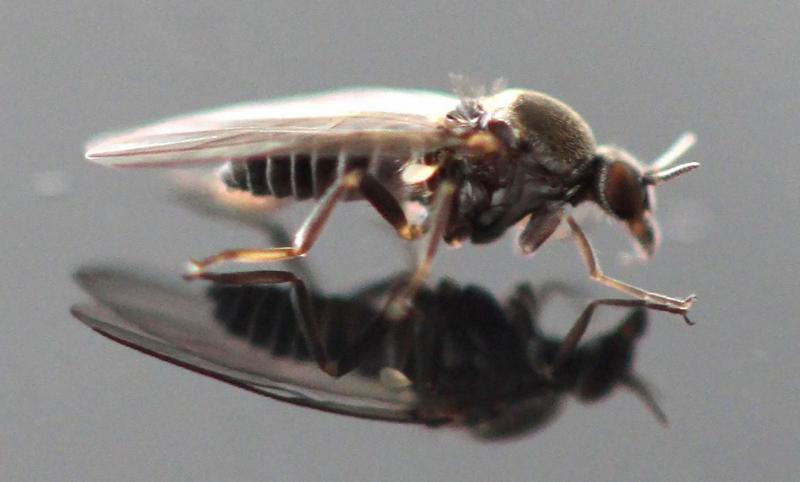Black Flies

If you have been swarmed and bitten by small black flies this year, you’re not alone. The culprits of these bites are commonly referred to as black flies or buffalo gnats (Figure 1). The reason we are noticing so many in 2019 is likely due to favorable spring conditions that included a lot of moisture. In addition, the black fly populations are persisting in South Dakota beyond the expected date of early June, which is likely due to the cool conditions that we experienced in May.
Black flies are active for approximately three weeks starting sometime in May. In North America, there are at least 33 species of black flies. These small flies are a nuisance because they will hover in swarms around human faces and may also bite. Although black fly bites aren’t necessary painful, they can cause itching in some cases.
Black flies lay their eggs around running water, and the larvae will only develop in running water. However, once the adults emerge, they are capable of traveling approximately 5-8 miles in search of hosts. Different black fly species have different host preferences, but all feed on warm blooded mammals and birds. The female black flies require a blood meal to produce eggs. For humans, there are no recorded disease transmissions by black flies, but they can transmit diseases to livestock and poultry.
Reducing Exposure
There isn’t a great way to manage black flies, but reducing skin exposure and using repellents can reduce their impact on activities. Be advised that although repellents can help, they are sometimes not as effective against black flies as they are against mosquitos. Wearing long pants, long sleeved shirts, and even a head net may be necessary in order to be outside at the same time as these flies. Fortunately, black flies only have one generation per year and shouldn’t be around much past mid-June in South Dakota.


